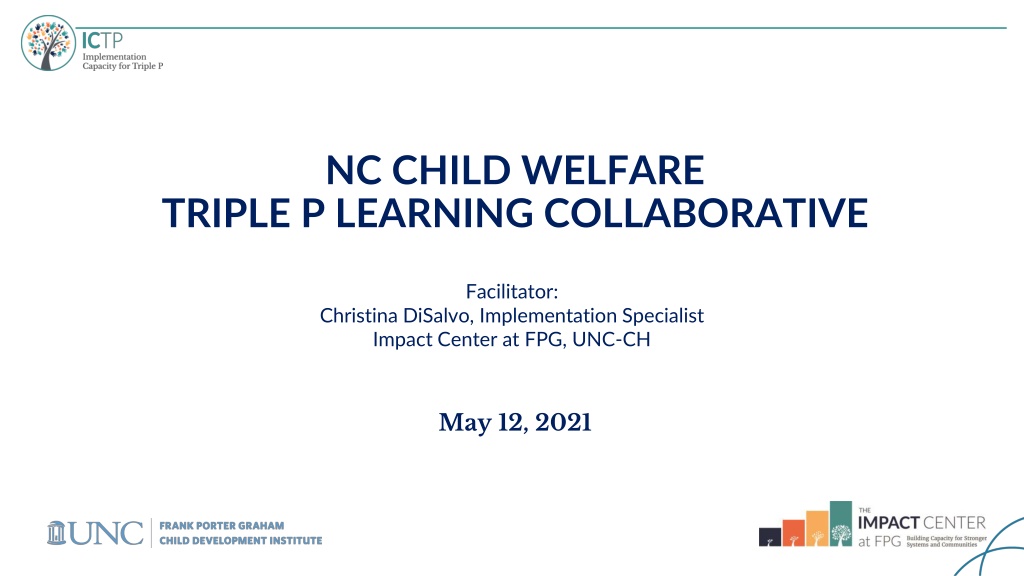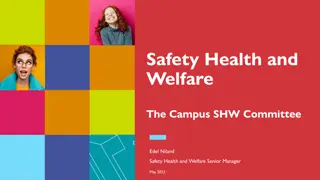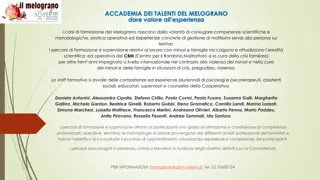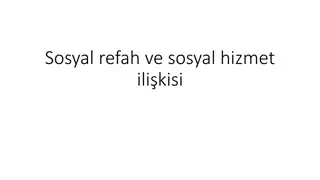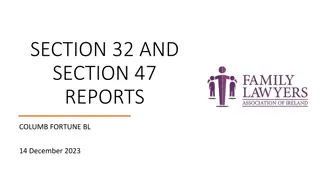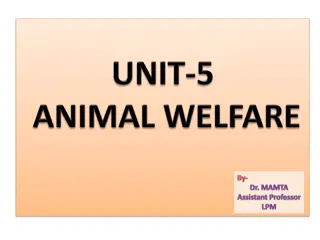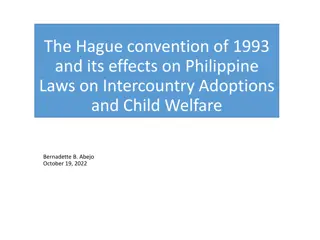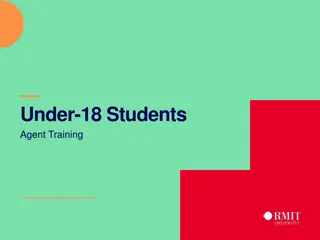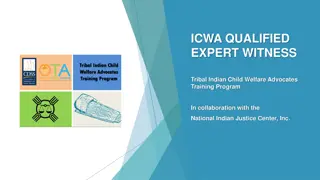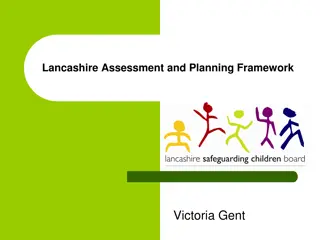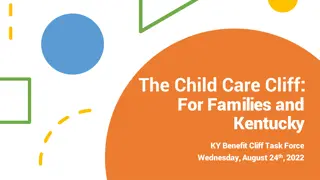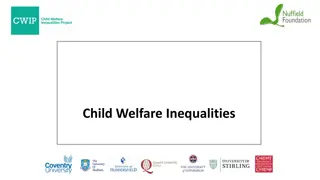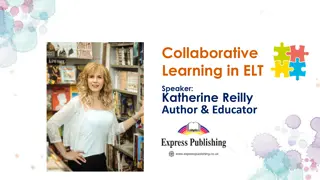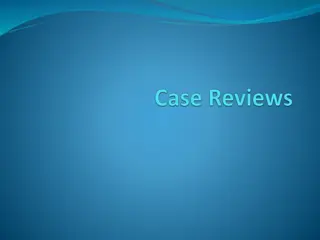NC CHILD WELFARE TRIPLE P LEARNING COLLABORATIVE
"Explore objectives, guiding principles, investments, and readiness in the NC Child Welfare Triple P Learning Collaborative. Reflect on agency readiness and factors affecting engagement. Assess motivation and ability for change at agency and family levels."
Download Presentation

Please find below an Image/Link to download the presentation.
The content on the website is provided AS IS for your information and personal use only. It may not be sold, licensed, or shared on other websites without obtaining consent from the author. Download presentation by click this link. If you encounter any issues during the download, it is possible that the publisher has removed the file from their server.
E N D
Presentation Transcript
NC CHILD WELFARE TRIPLE P LEARNING COLLABORATIVE Facilitator: Christina DiSalvo, Implementation Specialist Impact Center at FPG, UNC-CH May 12, 2021
Objectives Build awareness of NCDSS Triple P investments Learn how ongoing readiness activities can support Triple P implementation Review of available supports Discuss future collaborative topics of interest
Where Are We Going? Increased knowledge of practices and structures that support successful program delivery. Increased awareness of Triple P and fit with child welfare needs. Increased use of implementation tools, resources, and support.
Guiding Principles Guiding Principles Our Values We welcome different perspectives because it drives conversation. Creating a safe space for learning together We understand people have different levels of readiness and that supports learning through the sharing of successes, challenges, and ideas. Peer-to-peer support Enhancing service through practice Responsive supports adapted to context/needs We acknowledge those we serve and agencies we work in are different, but those differences allow us to focus decision-making on what works best for the families and the workforce supporting them.
NCDSS Triple P Investments Family First Prevention Services Act (FFPSA) Victims of Crime Act (VOCA) Family Support Request for Applications Implementation Support through UNC-CH
Readinessis a developmental point at which a person, organization, or system has the capacity and willingness to engage in a particular activity. It needs active support to be built, nurtured, and sustained.
Reflect on a time when your agency took on a new initiative or change. What factors either facilitated or limited your organization s readiness to engage?
Motivation & Ability Do we have the ability to make the change? Are we motivated to make a change? Agency level: assessing staff time and accessibility to resources needed to implement the program or practice well. Family level: assessing things that can impact overall family stability (e.g. mental health issues, history of trauma, time to commit to support) Agency level: assessing leadership buy-in, staff belief that Triple P is a benefit to the families they serve and is better than their typical approach to support. Family level: motivation to enhance their parent-child relationship through the use and practice of new strategies. 8
Resistance or Lack of Readiness? Common experiences that impact readiness: Turnover at any level Competing priorities Lack of leadership support Lack of communication Crises (large or small) Things that indicate a lack of readiness: Work is stalled Work is not getting done outside of meetings
Resistance or Lack of Readiness? One conjures feelings of frustration. Potential for increased pressure, stress and uncertainty. Reframe it! Signal to look deeper Anticipate it, design for it, respond to it. Be prepared to meet folks where they are.
Nurturing Ongoing Readiness COMMUNICATION FOR ENGAGEMENT! Actively ensuring that people see how Triple P fits. Engaging people to help them really see Triple P as it applies to them. Gathering feedback to figure out how to document data to track progress and improvement. CLIMATE FOR CHANGE IN THE ORGANIZATION IS SET! People get to learn together, try together, and share examples of early practice together. Leaders are demonstrating their role in supporting Triple P - Visible commitment! People are asked what resources and supports they need to get and stay ready.
Nurturing Ongoing Readiness PEOPLE UNDERSTAND WHAT THEY NEED TO DO & FEEL SUPPORTED The organization sets up ways to pay attention to & help staff deliver Triple P in day-to-day work. The organization is thinking about what to watch for and how to learn from what they see to get better. People perceive they have the resources they need to feel confident and competent. TEAMS HAVE CLEAR, DEDICATED, RESOURCED ROLES FOR IMPLEMENTATION There are people with specific roles to facilitate day-to-day coordination & management of implementing Triple P. Teams understand their specific purpose and how they connect to the work of other teams. Teams are linked to each other, leadership, staff, and partners in ways that fit local context. 14
Break Time 15
Readiness Panel: Jennifer Evans Tondrea Leach Jason Mahoney Supervisor-Placement & Behavioral Health Executive Director Child Welfare Program Manager Onslow County PEERS Family Development Center Wake County Human Services Wake County Human Services Linda Collins Sara van Driel Child and Family Team Facilitator & LINKS Coordinator Richmond County Department of Social Services Implementation Consultant Triple P America
Accessing Support Your Local Implementing Agency The DSS Implementation Support Specialist, Christina DiSalvo, christina.disalvo@unc.edu Triple P America, Sara van Driel, sara@triplep.net 17
Resource Toolkit Increased knowledge of practices and structures that support successful program delivery. Increased use of implementation tools, resources, and support. Increased awareness of Triple P and fit with child welfare needs. Agency Fit & Feasibility Assessment Readiness 1-Pager LIA Support Triple P Level Descriptions Learning Collaborative Recordings Impact Center Implementation Support TPOL Info Newsletter Archives Peer-to-Peer Learning
What Questions Do You Have? Let us know on the Jamboard! https://jamboard.google.com/d/1yppLsp2uA6POZFwI4XrBkQMDW50 hysy1yoTL_O1udxE/edit?usp=sharing 19
